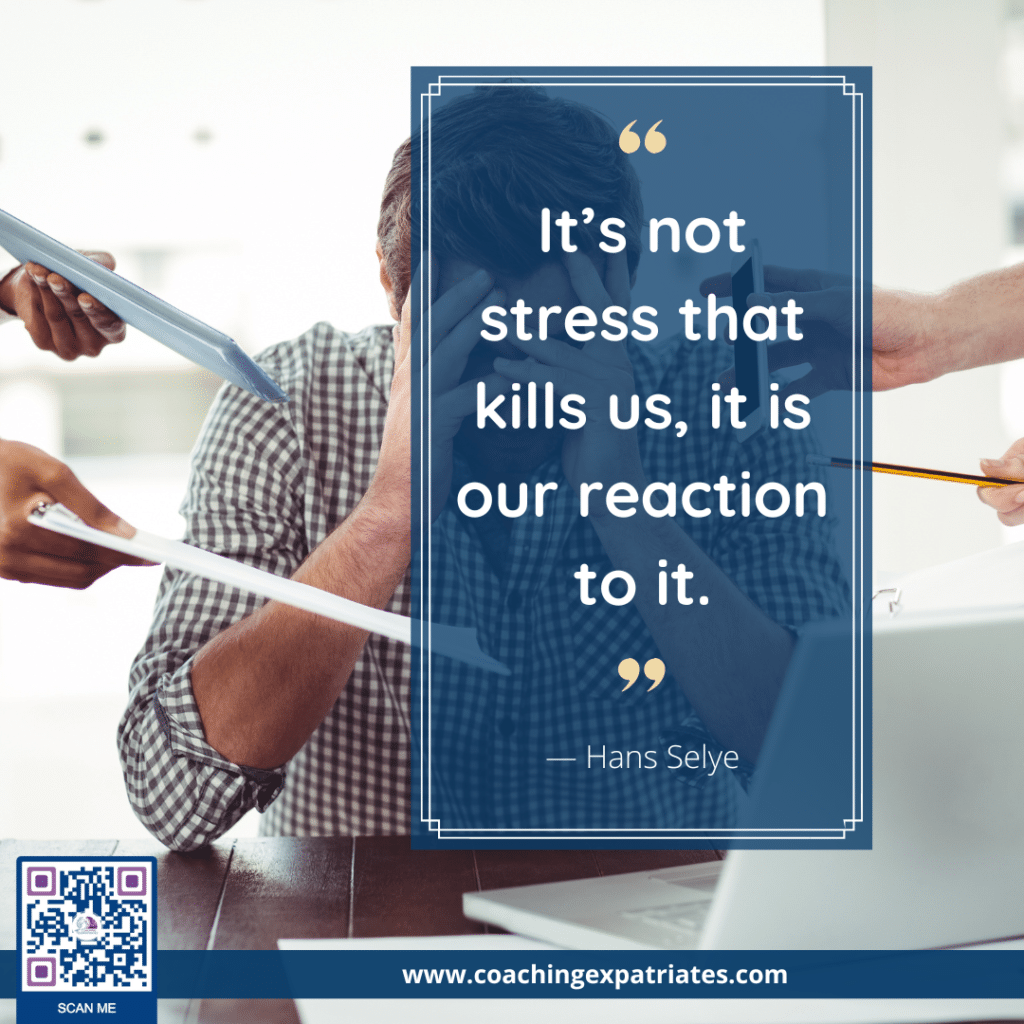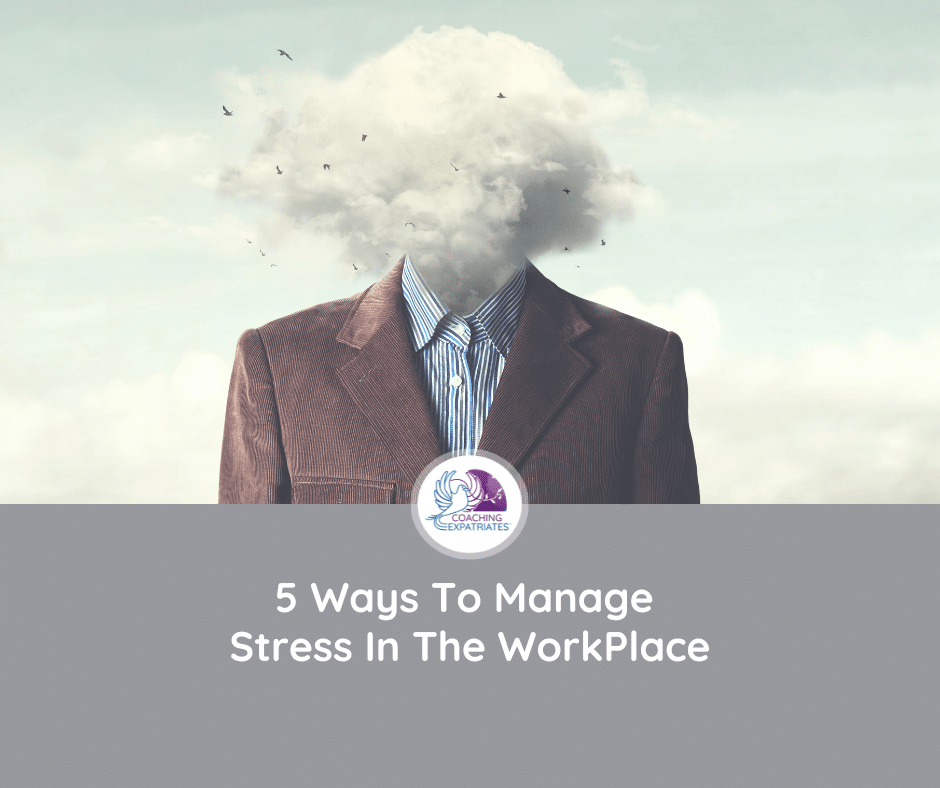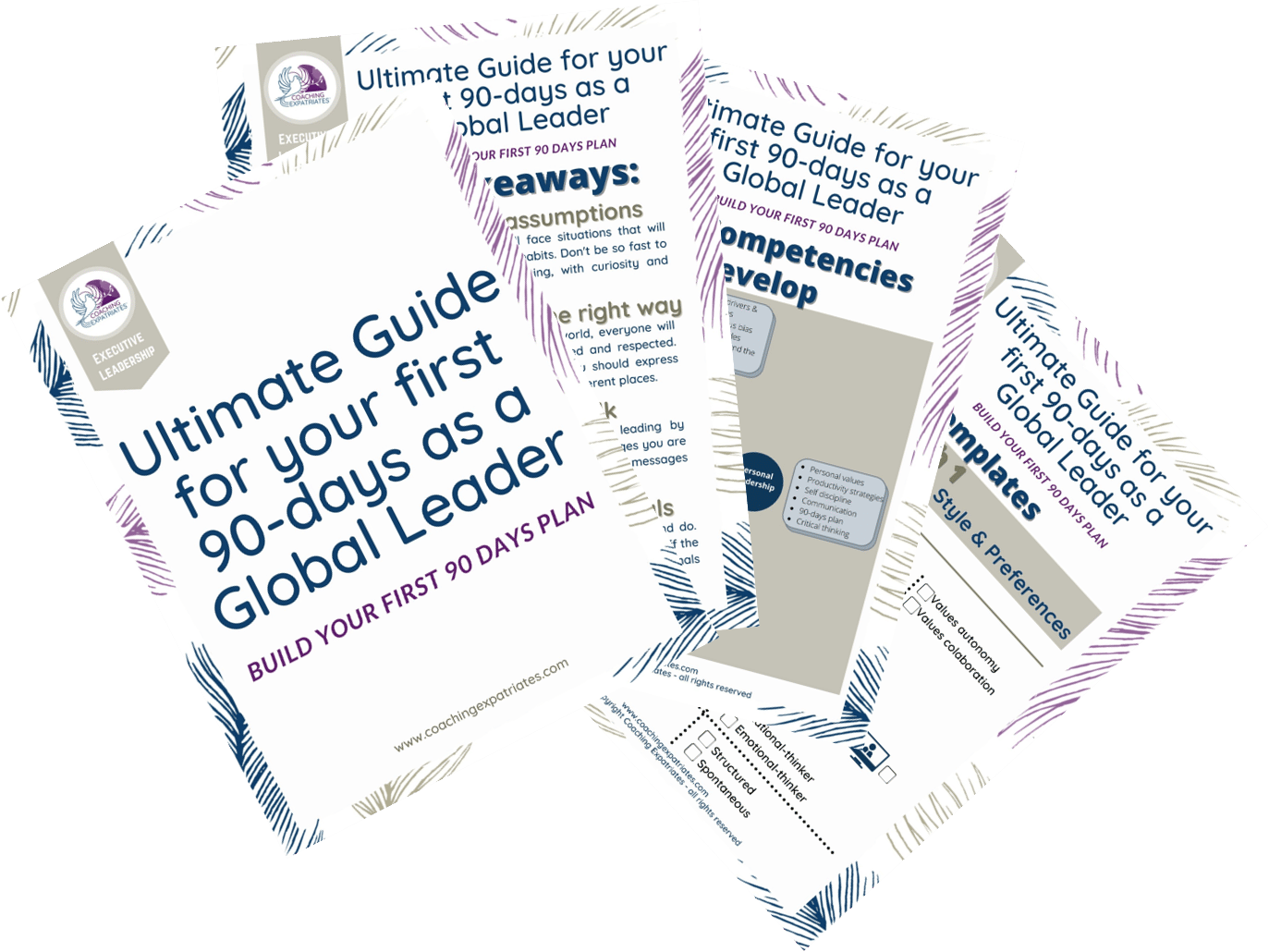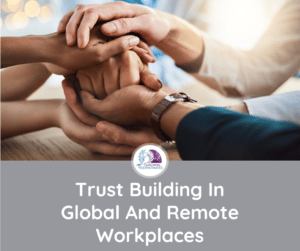Imagine walking into the office every day, carrying an invisible weight on your shoulders. Some days it feels light, and you don’t even notice it’s there. Other days, it feels like it’s crushing you. That weight? It’s stress. And whether we realize it or not, workplace stress has become a major issue for employees at all levels, affecting not only how they feel but also how well they perform.
Workplace stress isn’t just a personal problem—it’s something that impacts the entire organization. Studies show that when employees are stressed, their productivity drops, they’re more likely to take sick days, and the overall atmosphere becomes more tense and unmotivated. In fact, stress has become one of the leading causes of absenteeism, costing companies both time and money.
But it doesn’t have to be that way. When stress is managed properly, employees feel more supported, healthier, and more engaged in their work. This leads to a positive ripple effect across the company—higher performance, better retention rates, and a much healthier workplace culture.
In this article, we’re going to dive into five actionable ways you can manage stress in your workplace. These strategies will not only benefit your employees but also help your company become more efficient and productive. So, whether you’re leading global teams or managing HR policies, these tips will help you create an environment where people feel less stressed and more ready to do their best work.
The Glass Of Water Metaphor: Understanding Stress
Think about holding a glass of water. At first, it doesn’t seem heavy at all, right? But imagine holding that glass for 10 minutes. Then an hour. Now picture holding it all day. Suddenly, what started as a lightweight begins to feel like a massive burden. Stress works the same way.
In the workplace, stress often creeps up on us. At first, a few tight deadlines or extra responsibilities seem manageable. You might even tell yourself, “I’ve got this.” But over time, if that stress isn’t managed, it starts to feel heavier. It begins to wear you down mentally and physically, just like the glass of water that felt so light at first.
The problem isn’t necessarily the weight itself—it’s how long we carry it. When we don’t take the time to set the glass down, that weight builds up, leaving us exhausted and unable to focus. Even if you’ve read our guide on focus management and are proficient at it, stress will undermine exercising good focus management skills. In other words, stress doesn’t just drain your energy—it also makes it harder to concentrate, prioritize, and stay productive. In the workplace, this can lead to burnout, mistakes, troublesome miscommunication, and a decline in overall performance.
The key is learning to “put down the glass” before it gets too heavy. This means addressing stress early and often, rather than letting it pile up. By recognizing stress as it builds and taking action to manage it, we can keep it from overwhelming us and our teams. Whether it’s through short breaks, open conversations, or other stress-relieving strategies, it’s crucial to make stress management a priority before it becomes too much to handle.
If the video above does not load, you can watch it on YouTube using this link.
The quote “It’s not stress that kills us, it is our reaction to it.” is attributed to Hans Selye, a pioneering endocrinologist who is widely recognized for his research on stress and its effects of stress on the human body. He introduced the concept of “general adaptation syndrome (GAS),” which describes the body’s short-term and long-term reactions to stress. Hans Selye first identified GAS in 1946. He described it as a series of physiological reactions that help organisms adapt to overwhelming situations.
Some characteristics of each stage of GAS include:
- Alarm: The body prepares to deal with a threat.
- Resistance: The body recovers.
- Exhaustion: Occurs in response to prolonged or chronic stress.
Some physical symptoms of GAS include:
- headaches
- stomachaches
- muscle pain

Before stress reaches the exhaustion phase, it’s crucial to address it early with effective strategies. By taking proactive steps, we can reduce, mitigate, or even completely eliminate stress before it takes a serious toll. The key is to manage stress before it overwhelms us. The sooner we act, the better we can maintain our well-being and keep stress from leading to workload burnout. Managing stress is as important as workload management to prevent burnout.
5 Ways To Manage Stress In The Workplace
Managing stress in the workplace through stress management techniques doesn’t have to be overwhelming. By taking a proactive approach, leaders can create an environment (and culture) that not only reduces stress but also boosts productivity and engagement. Here are five actionable strategies and stress reduction techniques that will help you manage stress effectively in your workplace.
1. Promote Work-Life Balance In The Workplace
Maintaining a healthy work-life balance is one of the most effective ways to prevent burnout. When employees feel that they are constantly on the clock, employee stress starts to build up. Over time, this can lead to fatigue, reduced productivity, and even mental and emotional health issues.
Practical Steps:
- Encourage flexible working hours or remote work options where possible. This not only will improve work-related stress but will also increase job satisfaction overall.
- Lead by example—managers should model good work-life balance by not responding to work emails after hours. Yes, there might be periods of time where exceptions must be made. But if exceptions become the rule, then it’s not a best practice.
- Make it clear that taking vacations or mental health days is supported and encouraged. Put employee well-being at the forefront of discussions.
- Enable conditions for employees to take and talk about family time and any time for hobbies. Taking the mind away from work is an essential piece of work-life balance. Work-life balance can still happen when employees are in a productive work environment.
2. Foster Open Communication
Clear, open communication is essential in reducing workplace stress. When employees don’t feel like they have a voice, or they are left in the dark about important information, it creates anxiety and uncertainty.
Implementation:
- Schedule regular check-ins with your team to see how they’re doing and if they need support.
- Create anonymous feedback channels to give employees a safe space to voice their concerns.
- Invest in team-building activities that improve trust and make open dialogue a part of the workplace culture.
- Create workshops or training for greater communication effectiveness, and encourage your team to engage in them. You can start by downloading my extensive communication guide for global executives, designed to improve communication flow in diverse teams.

3. Provide Stress Management Training, Resources And Executive Coaching
Providing employees with resources to manage stress can make a big difference in how they handle the pressures of their work. Workshops, stress management training, mindfulness sessions, and relaxation spaces can help employees recharge.
Executive Coaching: Leaders, in particular, face unique stresses. Offering executive coaching not only helps them manage their own stress but also equips them with the tools to lead their teams through stressful situations.
Available Resources:
- Organize stress management workshops or mental health days.
- Provide access to mindfulness or meditation apps.
- Offer access to structured stress management programs.
- Promote daily personal time or “quiet time” so that employees focus on their health conditions.
- Offer executive coaching to help leadership improve their ability to handle stress reduction while guiding their teams.
- Organize time management training or workshops where employees share their best practices within the company. This can help reduce stress but also elevates everyone’s time management skills.
4. Create A Culture Of Recognition And Appreciation
Recognition goes a long way in reducing stress and increasing motivation. When employees feel valued for their contributions, they are more engaged and less likely to experience burnout. Stress isn’t always about the workload—feeling appreciated is just as important.
By the way, if you want to dive deeper into how effort and recognition are connected, and why it’s so critical to build a leadership culture where effort is recognized, not just the results, tune in to my podcast episode for a full breakdown.
Practical Suggestions:
- Start an “Employee of the Month” program or similar initiatives that highlight individual achievements. Read about how to celebrate success and people in the workplace to learn more.
- Encourage managers and peers to regularly give positive feedback, both publicly and privately.
- Implement small acts of appreciation, such as handwritten notes, shoutouts in meetings, or team lunches.
5. Encourage Physical And Mental Health Breaks
It’s easy to get caught up in the hustle and grind of daily team and individual tasks, but working non-stop only leads to stress accumulation. As a leader, you should take the lead (pun intended!) to prevent the build-up of stress among employees that might lead to mental health issues and other effects of job stress. Taking regular breaks is essential for maintaining mental clarity, and avoiding burnout and mental health challenges. As a leader, you should consider employee health as a top priority for greater performance, clarity, and job satisfaction of your employees.
Want to learn more about how to achieve and maintain clarity for better decision-making? Check out my 5 Powers of Clarity blog post where I break down how clarity can help you succeed in high-pressure environments.
Action Steps:
- Encourage short, frequent breaks throughout the day to allow employees to recharge.
- Create spaces where employees can take a mental break, like quiet rooms or relaxation areas.
- Provide breathing exercise apps, break reminder apps, mental and physical exercise apps, and general health management apps as part of the organizational culture.
- Offer activities that promote physical well-being, such as yoga sessions, walking meetings, or even stretching exercises during long workdays.
By incorporating these five strategies into your workplace, you can create an environment where stress is managed, not ignored. Each of these tips helps both employees and leaders address stress early, creating a healthier, more productive workplace for everyone.
How Leaders Can Support Their Teams
Leaders play a crucial role in shaping the culture of stress management within a workplace. Employees often look to their leaders for cues on how to handle pressure, so it’s important for leaders to set the right example and foster a supportive environment where stress is addressed, not ignored. Here are two essential ways leaders can support their teams in managing stress effectively.
Set The Tone
As a leader, your actions and behaviors set the tone for how stress is perceived and handled in your organization. If you’re constantly overworked, never taking breaks, or openly stressed, your team will likely mirror that behavior.
For example, I once had a boss who would always send email requests at 10 p.m., openly criticize people who drove their kids to school instead of being at the office by 7 a.m., and rant about how employees who complained about stress were simply weak and unprepared. This created an atmosphere where everyone felt on edge and overworked themselves to meet her standards. People on her team started to leave, request sick leave, or bluntly underperform while giving everyone around them a bad attitude. This only strained those who were still trying their best. In a short time, trust and job performance within the team plummeted, but instead of recognizing that her own attitude was driving a rotten culture, she kept blaming her employees.
On the other hand, if you, as the leader, prioritize balance, maintain calm under pressure, and encourage transparency about stress, your team will feel empowered to manage their own source of stress in a healthy way.
Actionable Tip: Make stress management a visible part of your leadership approach. Show your team that it’s okay to ask for help, take breaks, or delegate tasks when the workload gets overwhelming. When leaders demonstrate healthy stress management, it becomes part of the workplace culture.

Encourage Self-Care
One of the most effective ways to reduce stress is through self-care, but employees often feel guilty or hesitant about taking the time they need to recharge. Self-care is a personal leadership skill, and it should be part of your leadership suit, or what I call The Global Leadership Pillars®. Yes, you heard me right: it’s not just a personal life thing; it’s a leadership skill. It’s not just about having physical activity, working on deep breathing, and some meditation now and then. It’s about having a strong routine relying on 5 main elements that impact the way you work and lead. Read my post on personal leadership to learn more.
Leaders should create an environment where self-care is encouraged and respected. This not only improves individual well-being but also boosts overall productivity and morale.
Actionable Tip: Regularly remind your team to prioritize their mental and physical health. Whether it’s encouraging them to use their vacation days, offering flexible working hours, or providing wellness programs including access to a mental health professional, make it clear that self-care isn’t just acceptable—it’s expected. Create policies that protect employees’ time outside of work and make it okay to step away when needed.
By setting the tone and encouraging self-care, leaders can build a stress-resilient culture where employees feel supported and equipped to handle the challenges of the workplace. When stress is managed effectively from the top down, the entire organization benefits.
Books And Resources To Help Manage Stress In The Workplace
If you’re looking to dive deeper into managing excessive stress in the workplace and how sources of stress can have a performance impact, these books and tools offer valuable insights and practical solutions to manage all levels of stress.
Disclaimer: This article contains product affiliate links in the Books section. I may receive a tiny commission if you purchase after clicking on one of these links at no additional cost to you. They sponsor my time in curating and sharing valuable thought-leadership content. Thanks for your lovely support!
Books:
The Stress Solution
by Dr. Rangan Chatterjee (2018)
This book offers practical strategies to help reduce your level of stress and improve mental well-being in both your personal and professional life. It emphasizes simple, everyday actions that can make a big difference in how you handle job-related stress and overall sources of stress.
Burnout: The Secret to Unlocking the Stress Cycle
by Emily Nagoski and Amelia Nagoski (2019)
Written by two sisters, this book addresses the science of stress and burnout, focusing on helping readers break the stress cycle. It’s particularly useful for understanding how signs of stress manifest in the workplace and what leaders can do to prevent burnout and its negative impacts.
The Mindful Leader: 7 Practices for Transforming Your Leadership, Your Organisation and Your Life
by Michael Bunting (2016)
This book provides leaders with seven mindfulness practices that can help reduce unnecessary stress levels, increase self-awareness, and improve team performance. It focuses on creating a mindful and compassionate leadership style that promotes well-being and reduces stress in the workplace.
Tool:
Headspace is a meditation and mindfulness app that provides tools and relaxation techniques for stress relief, reduced heart rates, mental clarity for positive impact, and improved focus. It’s an excellent resource to combat stress for both individual employees and leaders who want to incorporate mindfulness into their daily routines, helping manage feelings of stress levels effectively.
Final Remarks
Managing stress in the workplace is not just a one-time effort—it’s a continuous process that requires attention and proactive measures. To recap, the five key strategies we’ve covered are: promoting a healthy work-life balance, fostering open communication, providing stress management resources and executive coaching, creating a culture of recognition and appreciation, and encouraging regular physical and mental health days and breaks.
Each of these strategies contributes to a healthier, more productive, less stressful work environment where employees feel supported and valued. When stress is appropriately managed, and employees’ well-being is focused on, both individuals and the organization thrive. Employees are more engaged, focused, and ready to perform at their best, while companies benefit from increased productivity, reduced absenteeism, a more positive workplace culture, and stellar organizational performance.
If you are looking for a leadership development partner and consultant to help you create a stress-resilient workplace, and implement some of the ideas from this post, you can hire me as your executive and development coach. Have a Free Strategy Call with me. We will go over your specific situation, and devise together a methodical but fun way to turn your tables on this matter. We will implement practices and ideas together during our coaching journey so you can feel more confident and poised.
If you are interested in developing specific global leadership skills, personally or team-wise, check out our online Global Executive Leadership program. We go over all The Global Leadership Pillars™ during 9 online modules, specially meant for global leadership development. It’s a unique leadership training methodology that will change the way you think, relate, and strategize as a global leader. You can also subscribe to our global leadership podcast, The Leadership Nest.
If you enjoyed this post, consider subscribing to our newsletter using the form below. We focus on providing good content to global leaders and executives who want to make impactful business decisions and be more inclusive and influential. We know your inbox is sacred, so we email just once per week, and we never sell, rent, or do anything funky with your information. Trust is the basis of Global Leadership, and we fully honor it.







